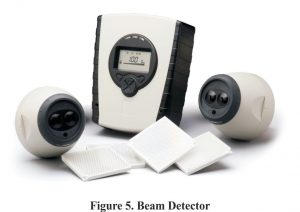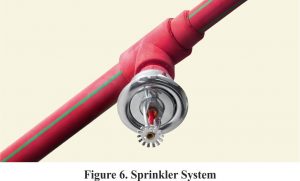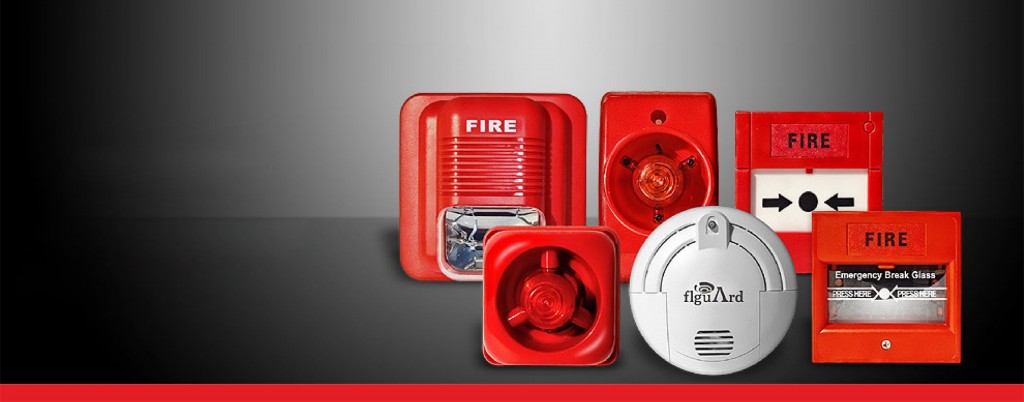 Inspection, testing, and maintenance requirements for these systems are extensive and ultimately are likely to cost more than the original installation.
Inspection, testing, and maintenance requirements for these systems are extensive and ultimately are likely to cost more than the original installation.
Fire detection systems are designed to discover fires early in their development when time will still be available for the safe evacuation of occupants. Early detection also plays a significant role in protecting the safety of emergency response personnel. Property loss can be reduced and downtime for the operation minimized through early detection because control efforts are started while the fire is still small. Most alarm systems provide information to emergency responders on the location of the fire, speeding the process of fire control.
To be useful, detectors must be coupled with alarms. Alarm systems provide notice to at least the building occupants and usually transmit a signal to a staffed monitoring station either on or off site. In some cases, alarms may go directly to the fire department, although in most locations this is no longer the typical approach.
These systems have numerous advantages as discussed above. The one major limitation is that they do nothing to contain or control the fire. Suppression systems such as automatic sprinklers act to control the fire. They also provide notification that they are operating, so they can fill the role of a heat detection-based system if connected to notification appliances throughout the building. They will not, however, operate as quickly as a smoke detection system. This is why facilities where rapid notice is essential, even when equipped with sprinklers, still need detection and alarm systems.
The most basic alarm system does not include detection. It has manual pull stations and sounds only a local alarm. This level of system is not what is typically used; it relies on an occupant to discover the fire, which can cause a significant delay. The more quickly you want to be notified of the fire, the more costly the system you must install. Speed of detection is expensive. The slowest system to detect a fire is a heat detector, which is also the least expensive. An air-aspirating smoke detection system provides the most rapid indication of fire, but these systems are five to 10 times as expensive.
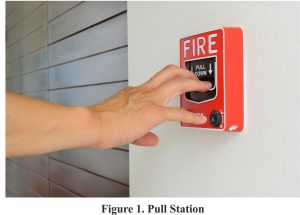 Where to Start When Choosing a System
Where to Start When Choosing a System
The type of fire detection and alarm system used in your facility should be based upon your fire safety objectives. These objectives flow from a risk assessment of your facility and operation. Your tolerance for risk and how much you can afford to lose is an important part of this process.
The issues within a hospital are not the same as they are in a warehouse. In a facility where life safety is the major concern, such as hospitals where patients may not be able to evacuate on their own, early warning is essential. Dormitories, hotels, and other facilities where occupants may be sleeping when a fire starts also require that a system provide more rapid notification.
In a warehouse, where the occupants will be awake and aware and there will most often be fewer of them, the alarm system often does not need to provide notice as early. In a generally unoccupied structure where life safety is not a major issue, detection of a fire can be slower without significantly increasing risk.
When selecting a system, you also must consider the ongoing commitment that will be required over the life of the system. Inspection, testing, and maintenance requirements for these systems are extensive. Meeting these requirements over the life of a system usually will cost more than the original installation.
Initiating devices are elements of the system that originate a signal. Manual pull stations, detectors, and supervisory devices are included in this group of components.
A manual pull station (Figure 1) is essentially just a switch that activates the alarm system when operated by a building occupant. Pull stations should be positioned so they are easy for occupants to find. They are typically located along routes of travel that would be used while exiting the building.
Detectors are available in a wide variety of types. The major categories are heat, smoke, and flame detectors. Within each category are numerous additional specific types. The discussion here will be limited to those most commonly used for building fire detection and alarm activation. Several varieties of detectors, such as flame detectors, are used primarily to activate suppression systems.
Heat detectors are the most basic detection devices. They are available in several types. These types are divided into two major categories; spot and line. Spot detectors are single units installed in single locations throughout the protected area. Line detectors provide a continuous detector throughout the area of coverage. Spot detectors are more commonly used, with line type detectors being reserved for special situations.
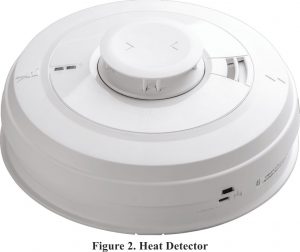 Spot type heat detectors (Figure 2) are most commonly fixed temperature, rateof- rise, or combination. Fixed temperature, as the name implies, operate at a specific temperature. Rate-of-rise detectors activate based on the speed of the rise in temperature, not a fixed point. These detectors are best suited to use in areas that may get hot under normal conditions, such as detectors in a warehouse that is not temperature-controlled. Detectors mounted at the ceiling level may get quite warm from the heat collected by the roof during the day. This temperature rise occurs gradually, though, and a rate-ofrise detector compensates for it.
Spot type heat detectors (Figure 2) are most commonly fixed temperature, rateof- rise, or combination. Fixed temperature, as the name implies, operate at a specific temperature. Rate-of-rise detectors activate based on the speed of the rise in temperature, not a fixed point. These detectors are best suited to use in areas that may get hot under normal conditions, such as detectors in a warehouse that is not temperature-controlled. Detectors mounted at the ceiling level may get quite warm from the heat collected by the roof during the day. This temperature rise occurs gradually, though, and a rate-ofrise detector compensates for it.
Smoke detectors (Figure 3) are available in a variety of types. Photoelectric smoke detectors operate based upon light scattering within the detection chamber of the detector. Light is projected through the chamber and will be scattered if it strikes smoke. This light, reflected off the smoke in the chamber, is detected by a photocell.
Ionization smoke detectors (the most common in home use) detect the particles in smoke. As smoke passes through the chamber, the particles are ionized. These particles may then be detected by charged plates in the detector. Smoke detectors are also available in combination with a heat detector (Figure 4). The beam type detector (Figure 5) operates when the beam is interrupted by obscuring smoke between the laser emitter and receiver. These detectors are most often used in areas of large open spaces.
An air sampling detection system uses tubing placed throughout the protected area. The tubing has small holes spaced out along the length of the tube and air is constantly drawn into the unit, which can detect extremely low levels of combustion products.
Supervisory and Notification Devices
Numerous supervisory devices can be connected to the fire alarm control panel. For example, a tamper switch (Figure 6) may be placed on water control valves for automatic sprinkler systems. If this valve is closed by an unauthorized person, the tamper switch will send a supervisory signal to the control panel, alerting your people to the problem. Supervisory devices are available for a wide variety of applications.
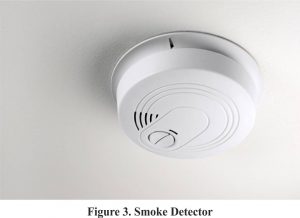 Systems may be addressable or nonaddressable. In the first type, all of the detectors on the system have a unique digital identifier. The fire alarm control panel can communicate individually with each device. In non-addressable systems, detectors may be divided into zones based on all of the detectors being on the same pair of wires, but the control panel cannot determine any information about an individual detector.
Systems may be addressable or nonaddressable. In the first type, all of the detectors on the system have a unique digital identifier. The fire alarm control panel can communicate individually with each device. In non-addressable systems, detectors may be divided into zones based on all of the detectors being on the same pair of wires, but the control panel cannot determine any information about an individual detector.
Addressable systems offer several advantages. The first is that a specific indication of the location of an activation is available during a fire. (Would you rather know that a detection has occurred somewhere in the west wing of your building or that it has occurred in office number 103? The latter is clearly more informative.) This specific location capability is also part of the second major advantage of these systems: trouble signals can specifically identify the component with a problem. If a single detector fails, for example, an addressable system will provide a trouble signal that indicates the specific detector. In non-addressable systems, the zone will be identified, but a repair person will have to check each detector in that zone to determine which one is not working.
Notification appliances are the audible, visual, and other devices located throughout the facility that warn occupants when the system has detected a fire. Horns, strobes, combination units (Figure 7), and bells are examples of these devices. Fire alarm control panels often have features available that allow alarms to be activated in selected locations within the facility based upon the location of the detector that activates. This feature can be used to permit staged evacuations, for example.
Alarms should be supplemented with communications devices that allow you to provide specific information and instructions to building occupants. People tend not to always respond as they should when a fire alarm sounds. An emergency voice communications system can significantly improve response of your occupants.
 Outside Assistance
Outside Assistance
One of the best references for fire alarms is NFPA 72 National Fire Alarm Code®. It contains requirements for design, installation, inspection, testing, and maintenance. It may or may not be adopted as law in your area. Check with your local fire department to identify the specific local requirements.
Your property insurance carrier also may place requirements on you as a condition for coverage or a specific premium level.
Detection and alarm systems are an important part of your overall fire protection process. Discovering fires early contributes to protecting building occupants, limiting property damage, and minimizing interruption of your operation.